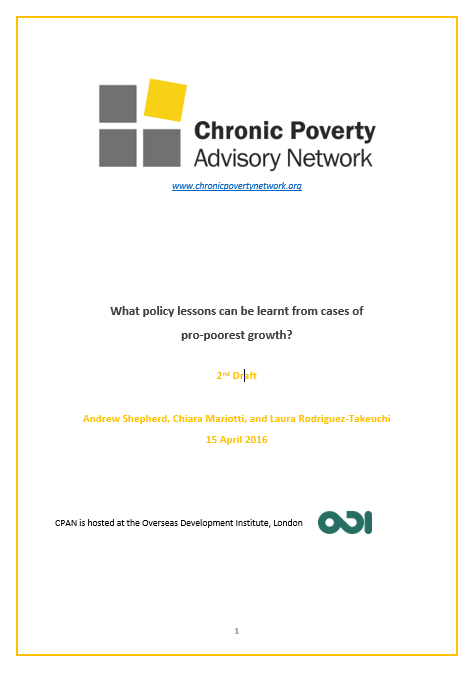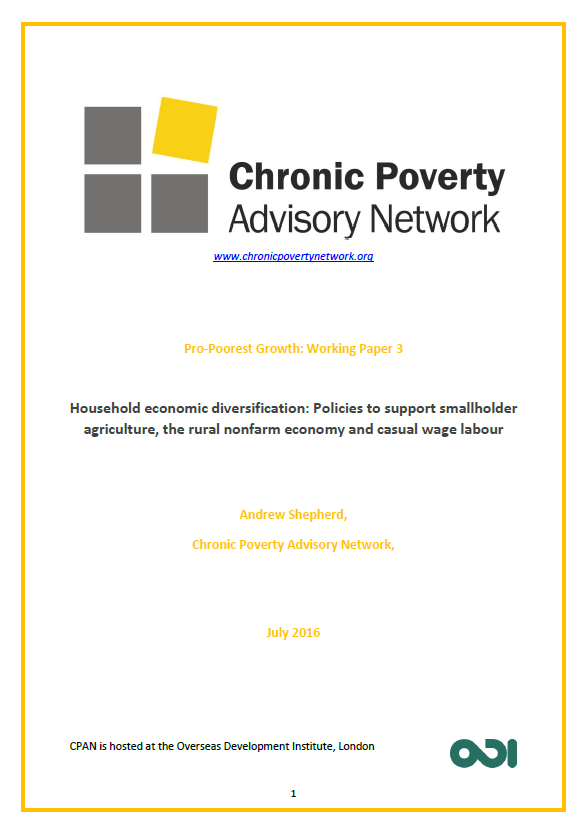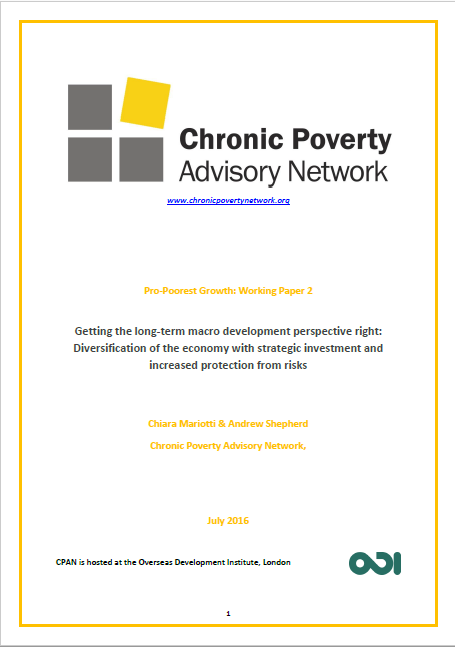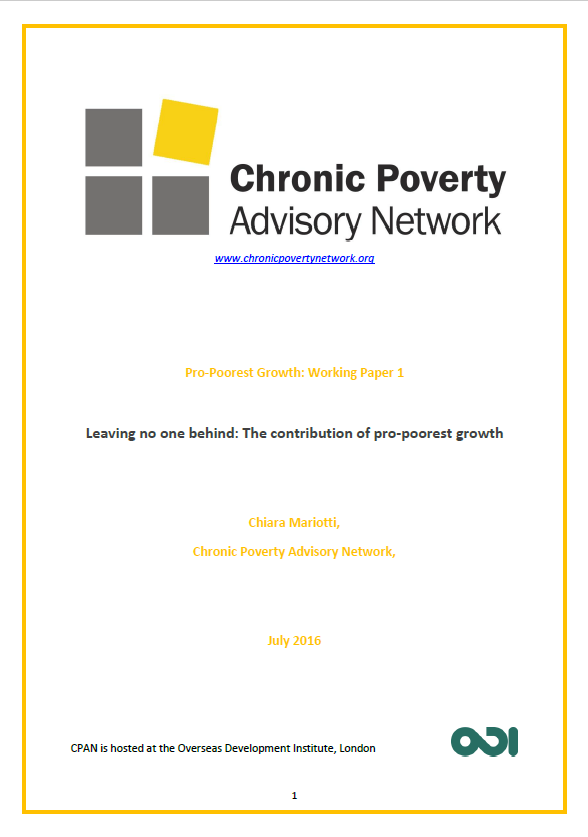During the previous decade developing country growth was at record levels, and only a few, mostly conflict affected countries, did not experience much per capita growth. Since the financial crisis, however, growth rates have declined, and the drop in growth in certain major economies, such as China, has affected many developing countries as the value of minerals and other raw materials has declined. For the last several years growth forecasts have been continually revised downwards.
During the high growth years, growth benefited the poorest people very variably. CPAN’s concern is that it should do so as much as is politically, economically and socially possible. CPAN’s research indicates that the poorest can benefit even when growth rates are low, which is an important finding in this new period of reduced growth and growth prospects.
The Pro-poorest growth (PP²G) approach is an expression of this. CPAN has developed several policy guides on aspects of PP²G. However there are gaps in the portfolio, most notably on growth and poverty reduction in fragile states, the specific roles social protection can play in assisting the poorest people to participate in growth and in preventing the impoverishment which can accompany growth, the sustainability of pro-poorest growth especially in the light of climate change, and on women’s economic empowerment.
The project “Pro-poorest growth policy analysis” aims at providing national policy makers in the 30 developing countries, which account for the great majority of the extremely poor, with the knowledge they need to develop and implement measures that will ensure that the poorest people are included in economic growth. A secondary objective is to stimulate a national debate about including the poorest in growth in each of these countries.
The project has been developing in two phases:
1. First Phase (Nov 2014 – March 2016) – CPAN has developed a set of case studies of countries where pro-poorest growth has occurred. It is also working on a policy guide on Macro-economic Policy. The third activity of this phase is an international event to draw attention to the need for and possibilities of pro-poorest growth. During the event policy makers and their networks will be exposed to the latest research evidence and thinking on pro-poorest growth.
2. Second Phase (Jan 2016 – March2017– the main activities of this second phase focus on: an E-consultation with policy makers and experts across 30 countries on the extent to which growth is including the poorest. This consultation will also analyse the kinds of policy and other measures which are needed to achieve this. Gap filling Policy Guides will also be developed: on social protection; on fragile states; and on women’s economic empowerment. The final output will be a fourth Chronic Poverty Report and a series of national policy briefs.
The project stands on three main components, which have been designed to lay the groundwork for the next Chronic Poverty Report on pro-poorest growth. These are:
- The development of a set of three working papers studying the different aspects of pro-poorest growth: (1) Leaving no one behind: The contribution of pro-poorest growth; (2) Getting the long-term macro development perspective right: Diversification of the economy with strategic investment and increased protection from risks; (3) Household economic diversification: Policies to support smallholder agriculture, the rural nonfarm economy and casual wage labour.
- The development of a Macro Economic Policy Guide to contribute to CPAN portfolio of resources
- Holding an international event to expose policy makers and their networks to the latest research evidence and thinking on pro-poorest growth and to provide the conceptual and evidentiary basis for the next Chronic Poverty Report. This Conference "Incorporating Pro-poorest Growth in the SDGs: Moving beyond the MDGs" held in Manila, at the Asian Development Bank's Headquarters, on the 26-27 April 2016. Download the conference report here.
The project is developed by CPAN and funded by the Australian Department of Foreign Affairs and Trade (DFAT).






